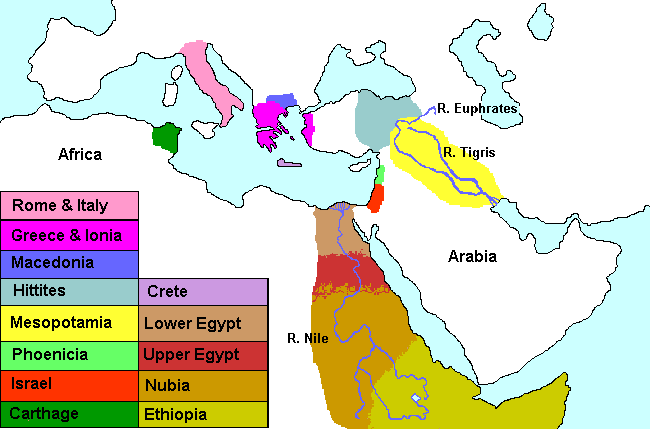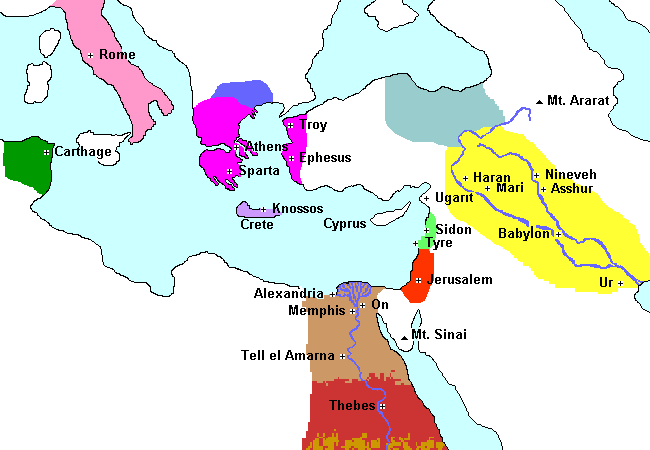Geography Pages
General Map of the Mediterranean and Middle East
All boundaries, and borders of countries, are approximate
The territory controlled by a king or people varied from time to time, and was often disputed by other peoples. Even the coast-line has varied over the years, particularly in the Gulf of Persia. An approximation to the modern coast-line is generally used in the maps. The sites of some ancient cities and towns are now not known with certainty
NATIONS and REGIONS

Notes :
Not all the countries shown existed together at the same time.
Upper and Lower Egypt were so called because of their relative altitudes.
Upper Egypt lay along the upper reaches of the Nile, where it came down from the mountains.
Lower Egypt lay along the lower Nile as it approached the Sea.
Carthage was a colony founded by the Phoenicians.
Rome (shown here as the Italian peninsula) started as a small village, and eventually became a great empire.
The Hittites eventually lost their homeland.
PLACES

Notes :
Alexandria was founded by Alexander the Great in 332 BC
Memphis (called Noph in Hebrew) was a capital of the Old Kingdom of Egypt (ca. 2700-2200 BC)
On called Heliopolis ("Sun-city") by the Greeks, was the center for sun-worship in Egypt
Tell el Amarna is the site of Akhetaten, the city founded by Akhenaten, and capital of Egypt for a brief period (ca. 1356-1336 BC)
Thebes (called No in Hebrew) was the capital of Egypt during the Middle and Late Kingdoms (ca. 1570-1085 BC). (There is also another town called Thebes, in Greece)
Knossos was the center of the Minoan civilization
Tyre was originally a city on an island off the Mediterranean coast. In order to conquer it, Alexander the Great built a causeway from the mainland to the island, which is still in existence
Ugarit, now called Ras Shamra, was a kingdom and city of the Chalcolithic and Bronze Ages, which was destroyed ca. 1200 BC. At this site Archaeologists discovered thousands of cuneiform texts, which are important for linguistic and historical studies
Mari, modern Tell el-Hariri, was a center for trade, and site of an important palace which fell to Hammurabi of Babylon ca. 1765 BC. Archaeologists have uncovered a vast library of documents, royal letters, and accounts, which give insight into the politics of the region and the lives of people during that period.
Asshur was the first capital of Assyria.
Copyright © 1999 Shirley J. Rollinson, all Rights Reserved